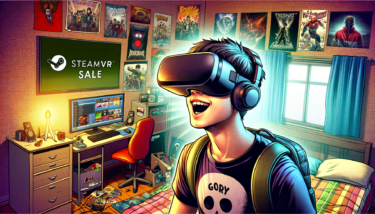The fast-food industry has been turning to AI for years in the hopes that it might improve efficiency, cut down on labour costs, and, ideally, make customers’ lives easier. One of the pioneers was McDonald’s, which in 2021 teamed up with IBM to test an AI system for voice ordering at around 100 drive-thru locations throughout the US.
Customers were supposed to be able to drive up, loudly state their orders into the drive-thru microphone, and then have an AI record all of that, instead of a human crew member. Theoretically, the AI should be able to comprehend more complicated requests, offer recommendations based on past orders and also reduce error, all while simultaneously continuing to provide fast service and without getting bogged down by staffing problems.
Yet McDonald’s is already giving up on the AI drive-thru feature just a few years after introducing it. Viral videos exposed the system as overwhelmed with more simple orders, taking requests from the wrong cars and recommending peculiar food couplings, like ice cream and bacon. Following these public failures, McDonald’s declared that it will no longer use IBM for the partnership after July 31, 2024.
This spectacular flameout raises the question: does AI really have a role to play in the drive-thru of the future, or is ‘Burgerbot’ just destined to be the next in a long line of extremely smart things that fundamentally, scornfully refuse to understand humans and, thus, fail?
The pros of AI drive-thrus
But McDonald’s woes aside, the benefits that attracted the company and competitors to AI drive-thrus in the first place haven’t disappeared. Labour costs are going up while staff are getting harder to find, so the prospect of having an AI take orders could offer significant cost reductions in the future.
AI systems also promise something extremely compelling: absolute understanding of even the most twisted, crazy customer issues or requests you can think of. Armed with prior ordering data, the AI was able to provide custom recommendations aimed at boosting average spend.
AI ordering, furthermore, could lead to an even speedier, less-friction-filled drive-thru experience. An AI could immediately process an order rather than requiring a human crew member to repeat it back. Those efficiencies could be even more significant during peak hours when cars are sprawled around the building and the drive-thru is jammed.
The negatives – and where McDonald has stumbled
Of course, the viral blunders that shut down McDonald’s AI drive-thru dreams tells a cautionary tale true to life when it comes to some of the real pitfalls with which this new tech grapples. Despite years of training, McDonald’s AI system still seemed to frequently fail at the very core task of taking accurate orders.
And such failures during the ordering process could result in customer dissatisfaction and expensive order inaccuracies – which in turn could wipe out any potential labour savings. And then there is the looming question of whether AI will ever be able to understand the constant stream of idiosyncratic phrasings, accents, and off-menu requests as well as humans.
The McDonald’s experience also hints at the “uncanny valley” challenge of AI-powered ordering. While often impressive, the current state of AI can still produce responses that seem almost human, but not quite – leading to an unsettling experience for some customers. A human voice actor may be required to dub over the AI.
The future of AI drive-thrus
Despite pulling the plug on its initial system, the fast food giant still believes AI will be a big player in the drive-thrus of the future. The IBM project, which testing gave the company “confidence that a voice ordering solution for drive-thru will be part of our restaurants’ future,” is part of a broader effort by McDonald’s to develop “long-term, scalable solutions,” a company spokesperson said.
Chipotle, Wendy’s, Taco Bell, and Pizza Hut are among a number of other big chains that are also making big moves to integrate AI drive-thru ordering into their businesses. The stakes are high, with the entire industry standing to save billions in labour costs if this technology works.
The consensus among most experts, however, is that AI drive-thru ordering is just beginning and that major milestones must still be met before it goes truly universal. But with AI language models advancing so fast, it may not be long before the ordering-caution and other ordering issue plaguing McDonald’s will be a thing of the past.
There may also be a phased handoff period where passengers have the choice of interacting with an AI or a human flight attendant. It might build rapport and increase trust over time, which might be an advantage for AI drive-thrus.
But at the end of the day, it sounds like McDonalds was still a few months to years ahead of the curve and just rolled this out more aggressively than it should have right away. Or, as one Silicon Valley investor quipped yesterday: “You can’t be a pioneer without taking a few arrows in the back.” For the fast-food industry, streamlining drive-thrus with AI remains the next frontier – it’s just going to take more time.
Want to learn more about AI and big data from industry leaders? Check out AI & Big Data Expo taking place in Amsterdam, California, and London. The comprehensive event is co-located with other leading events including Intelligent Automation Conference, BlockX, Digital Transformation Week, and Cyber Security & Cloud Expo.
Explore other upcoming enterprise technology events and webinars powered by TechForge here.
Source: artificialintelligence-news





